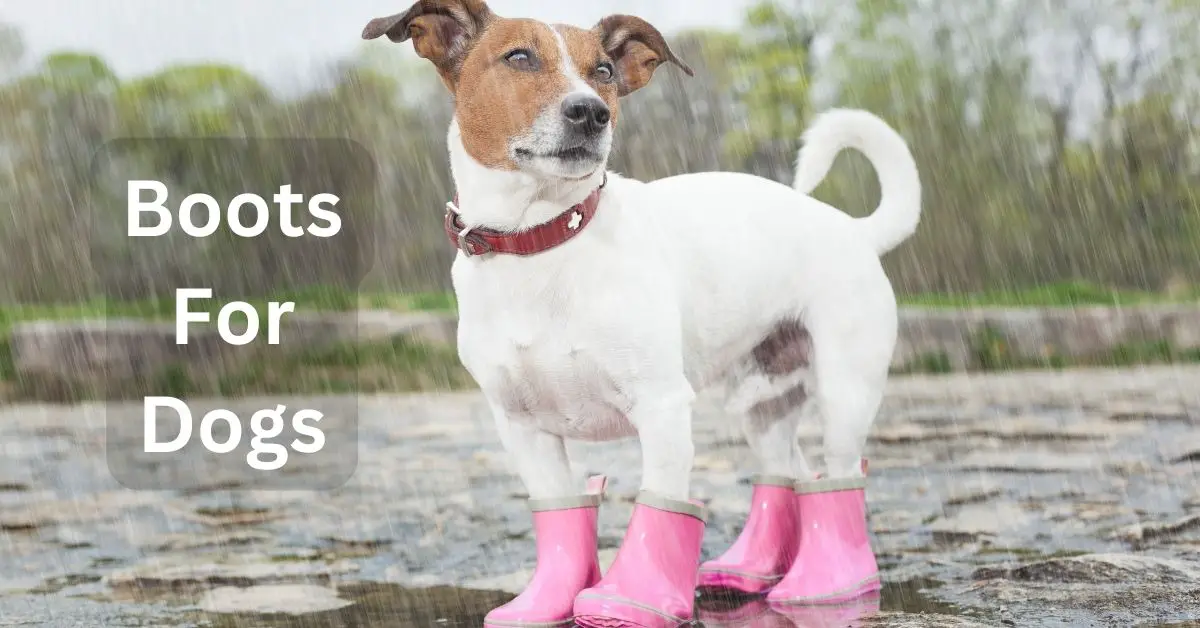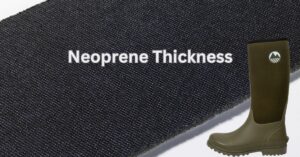Boots For Dogs - Everything You Need To Know
As a dog owner, it’s important to keep your furry friend safe and comfortable in all kinds of weather. While most dogs love playing outside, rainy and muddy conditions can cause discomfort and even harm to their paws. This is where boots for dogs come in handy.
What are boots for dogs
Boots, also known as dog wellies and dog rain boots, are footwear designed to protect a dog’s paws from wet, muddy, or rough surfaces. They are made of waterproof or water-resistant materials and provide traction to prevent slipping on wet or icy surfaces. Boots come in different sizes and styles to fit various dog breeds and needs.
Why do dogs need boots
Dogs’ paws are sensitive and can easily get injured or irritated by rough surfaces, hot pavement, or chemicals such as salt used to melt ice. When it’s rainy or muddy outside, their paws can get wet and dirty, leading to discomfort and even infections. Boots for dogs can prevent these issues and keep their paws dry, clean, and protected.
Types of boots for dogs
There are different types of boots for dogs, each with its own advantages and disadvantages:
Disposable boots
These are single-use boots made of thin plastic or rubber. They are affordable and convenient for occasional use but not very durable or comfortable.
Reusable boots
These are multi-use boots made of thicker and more durable materials such as neoprene, rubber, or nylon. They are more expensive than disposable wellies but offer better protection, comfort, and longevity.
Custom-made boots
These are boots that are specifically designed and fitted for your dog’s unique paw shape and size. They are the most expensive option but offer the best fit, comfort, and protection for dogs with unusual paw shapes or conditions.
BEST SELLING DOG BOOTS
Last update on 2025-06-14 / Affiliate links / Images from Amazon Product Advertising API
Factors to consider before buying boots for dogs
Before purchasing boots for your dog, there are several factors to consider:
Material
The material of the boots should be durable and waterproof or water-resistant. Neoprene, rubber, and nylon are popular choices for reusable boots, while disposable boots are usually made of plastic or thin rubber.
Size
Getting the right size of boots is crucial for your dog’s comfort and safety. Measure your dog’s paw size and refer to the manufacturer’s size chart to ensure a proper fit. A well-fitting boot should be snug but not too tight or loose.
Durability
Boots should be able to withstand rough terrain, frequent use, and exposure to water and mud. Look for boots with reinforced seams, sturdy soles, and strong closures.
Comfort
Boots should be comfortable for your dog to wear and not restrict their movement. Look for boots with soft interiors, flexible materials, and ergonomic designs.
Traction
Dog boots should provide good traction on wet or slippery surfaces to prevent slipping and injuries. Look for boots with non-slip soles and good grip.
How to choose the right size of boots for dogs
Choosing the right size of boots for your dog is important for their comfort and safety. Here are some tips on how to do it:
Measure the paws
Use a tape measure or ruler to measure the length and width of your dog’s paw. Make sure to measure the widest part of the paw, including the pads and nails.
Refer to the size chart
Check the manufacturer’s size chart to find the appropriate size for your dog based on their paw measurements. Each brand may have different sizing, so make sure to follow their guidelines.
Try them on
Once you have purchased the boots, try them on your dog to ensure a proper fit. Observe their movements and behaviour to make sure they are comfortable and not restricted in any way.
Tips for putting on and taking off boots for dogs
Putting on and taking off boots can be a challenge for some dogs, especially if they are not used to wearing them. Here are some tips to make the process easier and less stressful:
Positive reinforcement
Use treats, praise, and positive reinforcement to encourage your dog to wear the boots. Start by letting them sniff and explore the wellies, then gradually introduce them to their paws.
Use a paw balm
Apply a paw balm or moisturizer before putting on the boots to prevent dryness and cracking of the paws. This will also make it easier to slide the boots on.
Take it slow
Take your time when putting on and taking off the boots, and do it in a calm and gentle manner. Avoid forcing the boots on or off, as this can cause discomfort or fear in your dog.
DOG PAW BALM
Last update on 2025-06-14 / Affiliate links / Images from Amazon Product Advertising API
How to take care of boots for dogs?
Taking care of boots can help extend their lifespan and maintain their quality. Here are some tips on how to do it:
Clean them after every use
Wipe down the boots with a damp cloth or sponge to remove dirt, mud, and debris after every use. If they are very dirty, you can rinse them with water and mild soap, then air dry them.
Store them properly
Store the boots in a dry and cool place, away from direct sunlight or heat. Avoid storing them in a damp or humid environment, as this can cause mould or mildew.
Check for damage
Regularly inspect the boots for any signs of damage, such as holes, tears, or loose seams. If you notice any damage, replace the boots immediately to prevent injury to your dog.
Frequently asked questions: Boots for dogs
Can boots protect dogs from snow and ice?
Yes, boots can provide protection and traction for dogs walking on snow and ice. Look for boots with non-slip soles and good grip to prevent slipping and injuries.
Can boots prevent injuries?
They can protect dogs’ paws from injuries caused by rough or sharp surfaces, hot pavement, or chemicals such as salt used to melt ice. However, they cannot prevent all types of injuries, and dogs should still be supervised when wearing boots.
Are boots suitable for all dogs?
Boots may not be suitable for all dogs, especially those with allergies or sensitive skin. It’s important to check the material and size of the boots before purchasing them and to monitor your dog’s behaviour and comfort level when wearing them.
How long do boots last?
The lifespan of boots depends on their quality, frequency of use, and maintenance. Disposable boots may only last for one or two uses, while reusable boots can last for several months or even years with proper care.
Can dogs wear boots all day?
Dogs should not wear boots for extended periods of time, as this can cause discomfort and restrict their natural paw movement. It’s recommended only to use boots when necessary and to take them off after a short period of time to allow your dog’s paws to breathe and rest.
DOG PAW CLEANER
Last update on 2025-06-14 / Affiliate links / Images from Amazon Product Advertising API
Conclusion
Boots for dogs are a useful accessory that can protect your furry friend’s paws from wet, muddy, or rough surfaces. By considering the boots’ material, size, durability, comfort, and traction, you can choose the best option for your dog’s needs. With some patience and positive reinforcement, you can train your dog to wear boots comfortably and safely. By taking care of the boots and monitoring your dog’s behaviour, you can ensure their long-lasting use and effectiveness.
In summary, boots for dogs are an excellent investment to ensure your furry friend is comfortable and safe in all weather conditions. With proper research, training, and care, your dog can wear boots and enjoy all their outdoor activities without discomfort or harm.













